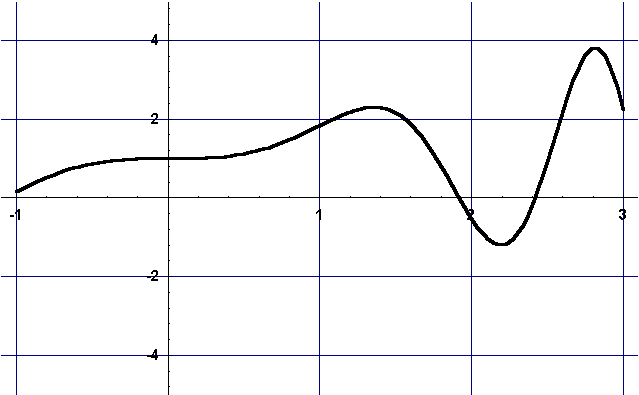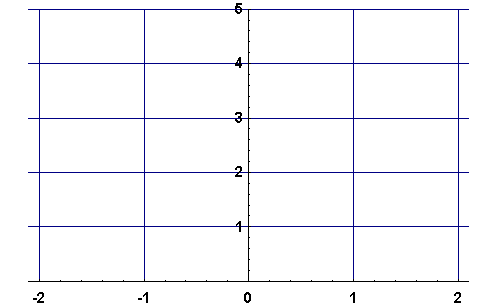Math 4111
Test 2
Spring 1996
No books, notes etc. are permitted.
Show all your work! Box in your answers!
The test has 7 problems on 4 pages.
Read the problems carefully!
Problem 1 (15 points)
Sketch the graph of the derivative of f(x),
where f(x) has the following graph:

Problem 2 (15 points)
Let
f(x)=x3-2x. Compute f '(-2) algebraically by using the definition of the derivative.
Problem 3 (15 points)
The following table gives the population of the City of El Paso during the last 90 years:
| YEAR |
POPULATION |
YEAR |
POPULATION |
| 1890 |
10,338 |
1940 |
96,810 |
| 1900 |
15,906 |
1950 |
130,485 |
| 1910 |
39,279 |
1960 |
276,687 |
| 1920 |
77,560 |
1970 |
322,261 |
| 1930 |
102,421 |
1980 |
425,259 |
(a) Estimate the rate of change of the population for 1970. Explain your reasoning!
(b) Approximately when was the rate of change of the population the greatest?
(c) Estimate the population for the year 1957.
(d) Estimate the rate of change of the population for 1957. Explain your reasoning!
Problem 4 (10 points)
Sketch the graph of a positive function on [-2,2], whose
first and second derivatives are everywhere negative!

Problem 5 (15 points)
Consider the following functions, defined on [0,1]
:
Sketch both functions, then sketch their product
 .
(It is best to use three separate graphs.) Then find
.
(It is best to use three separate graphs.) Then find
 ,
,
 , and
, and
 . (You should give exact answers!)
. (You should give exact answers!)
Problem 6 (15 points)
Compute a ``good" approximation for the area enclosed by the graph of
 , the x-axis, and the lines x
, the x-axis, and the lines x=0
and
 . Explain your procedure! (Hint: Graph f
. Explain your procedure! (Hint: Graph f(
x)
first!)
Problem 7 (15 points)
For the following problem you may use that the function
F(
x)=6
x-
e2x has the derivative
F '(
x)=6-2
e2x.
Find the area enclosed by the graph of
f(x)=6-2e2x, the x-axis and the lines x=0 and x=1. Give an exact answer, not an approximation! (Hint: Graph f(x) first!)
Helmut Knaust
1999-02-02




 ,
,
 , and
, and
 . (You should give exact answers!)
. (You should give exact answers!) . Explain your procedure! (Hint: Graph f(x) first!)
. Explain your procedure! (Hint: Graph f(x) first!)